6 Ayurvedic Herbs to Balance Vata Dosha: Ashwagandha, Triphala & More
When it comes to harmonizing the doshas, ayurvedic herbs are helpful companions. Ayurveda has an ancient legacy of using herbs and herbal blends to assist doshas by bringing warmth, stability, and sustenance. For unbalanced Vata dosha, you should use...
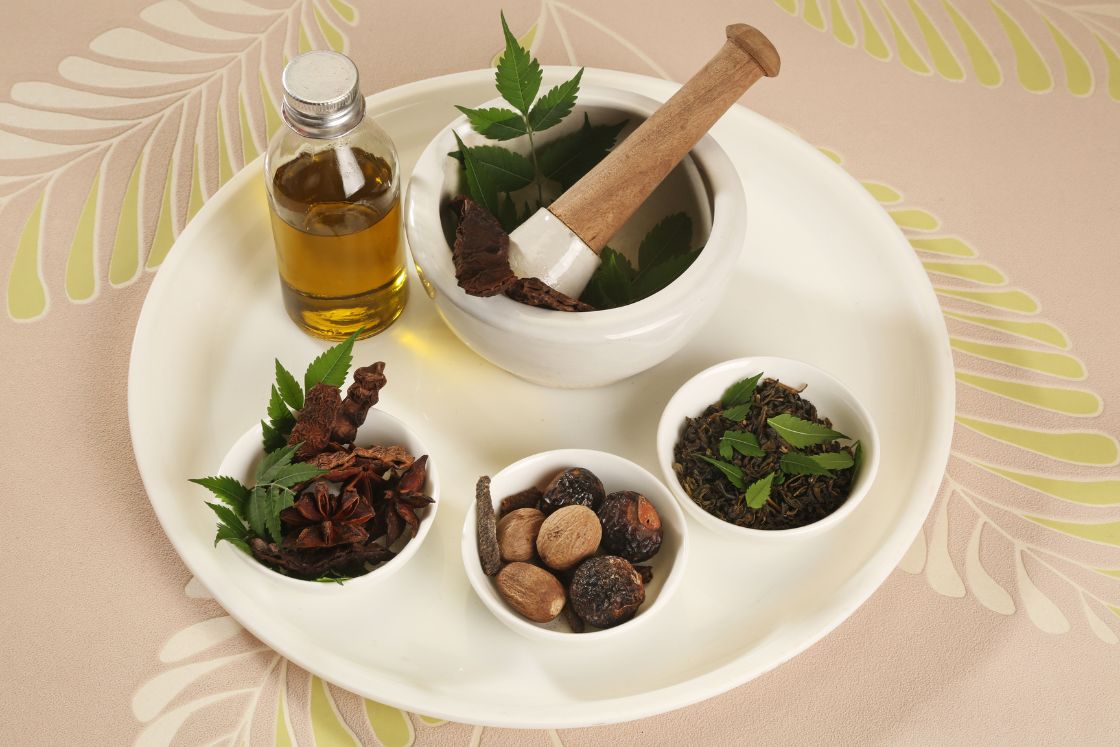
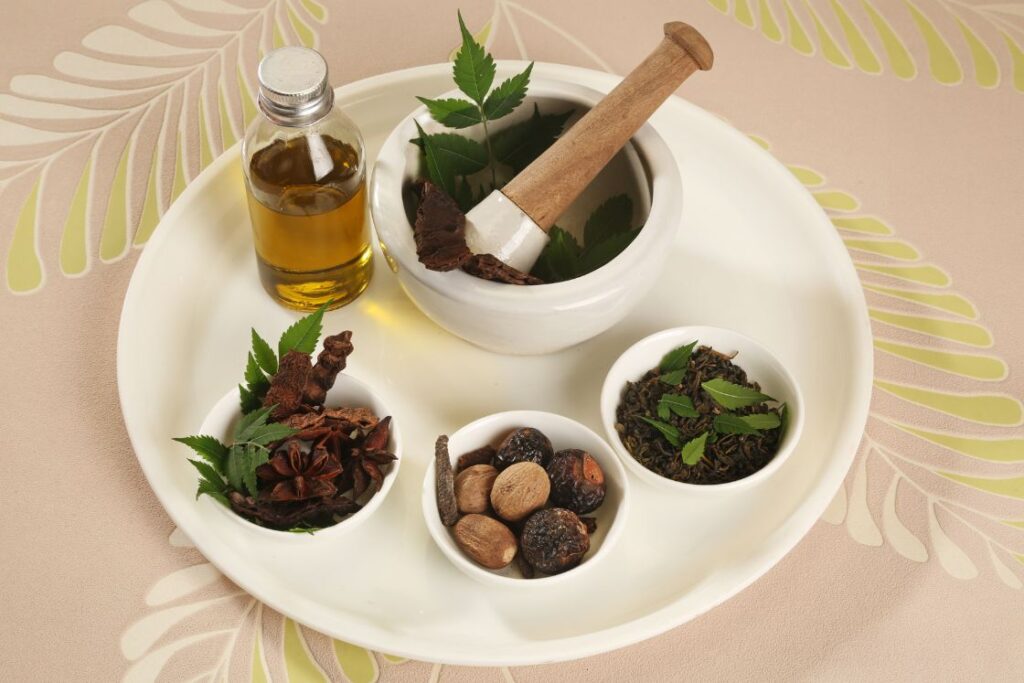
When it comes to harmonizing the doshas, ayurvedic herbs are helpful companions. Ayurveda has an ancient legacy of using herbs and herbal blends to assist doshas by bringing warmth, stability, and sustenance.
For unbalanced Vata dosha, you should use herbs that have warm, nourishing, and grounding properties. To calm the light, astringent, and dry Vata, utilize vata-lowering herbs that are typically thick, sweet, and unctuous in origin.
Below are details of some well-known herbs for maintaining Vata balance.
1. Ashwagandha
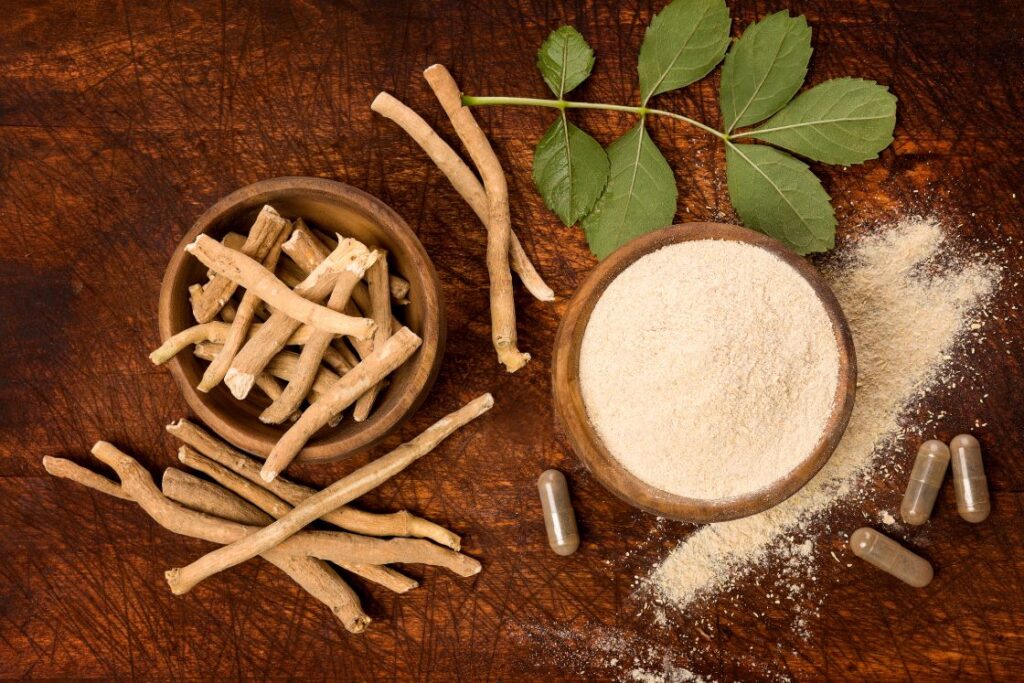
Ashwagandha is among the favourites of ayurvedic practitioners. The name translates to “smell of the horse” which means that this herb provides the user stamina, strength, and grace of a horse.
Ashwagandha has long been prized in Ayurvedic medicine as a revitalizing herb that aids the body in overcoming mental and physical stress.
Due to its revitalizing qualities, it is usually referred to as “Indian ginseng.”
Since it soothes the nervous system and promotes mental attention, ashwagandha is especially advantageous for Vata types.
This herb is ideal for tackling the pressures of modern lifestyles, which might increase vata in our bodies, because of its propensity for fostering inner peace and core energy. People who report feeling worn out, having trouble concentrating, or feeling unrooted are usually recommended to consume.
Some other benefits of ashwagandha for vata dosha are:
Soothes the emotions of stress and overwhelm. Helps in improving sleep patterns. Increases the antioxidants in the blood and reduces the chances of inflammation. Replenishes the energy when feeling low, tired, or ungrounded. Possesses the potential to boost the marrow, semen, and muscles. Encourages the generation of essential substances and proteins for healthy skin.How to use Ashwagandha
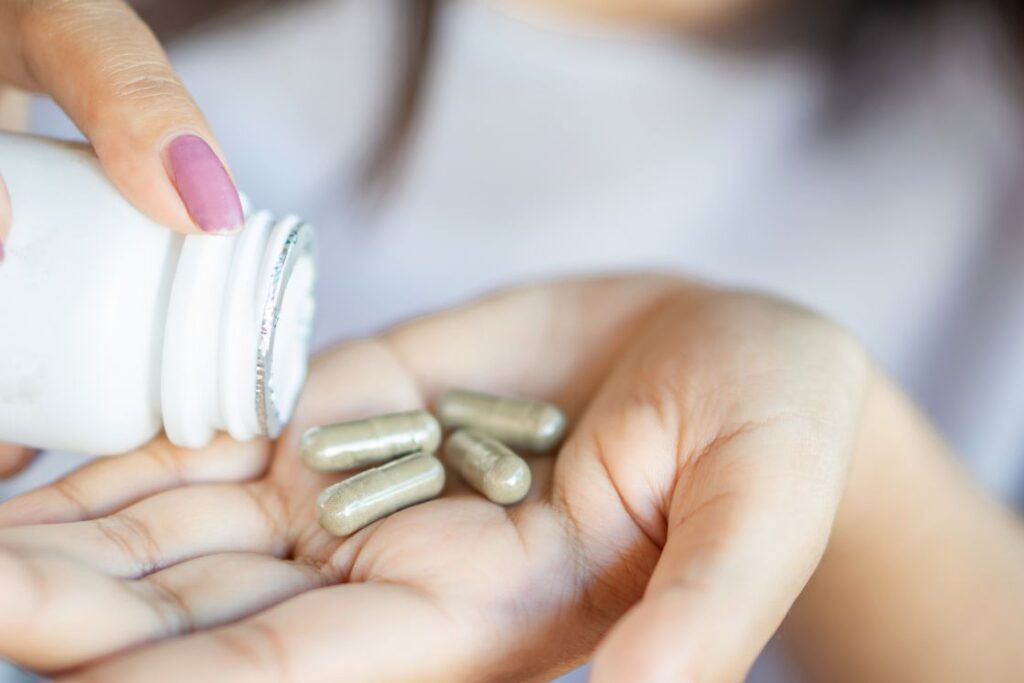
The ashwagandha plant’s root is the component that is most frequently utilized in herbal treatments, even though the leaves and fruit all have beneficial therapeutic effects.
Ordinarily, a dose of 600 to 1000 mg taken twice daily is advised.
As a mind and body tonic, Ayurveda conventionally advises combining a half teaspoon of ashwagandha powder in a half cup of lukewarm water, at least one to two hours before meals. This concoction can also be called Ayurvedic Churna. It is a great approach to invoke the earth element in Vata individuals and engage senses with plant medicine.
Ashwagandha can also be consumed with equal amounts of ghee and honey, which serve as a channel for delivering herbs further into tissues for total nutrient absorption and regeneration.
Make sure you are not mixing equal amounts of honey and ghee because that is hazardous.
Having a cup of hot milk with a spoonful of powdered ashwagandha before bed is helpful for persons who have insomnia and anxiety.
You can also consume ashwagandha in the form of tablets and liquid extracts. The liquid extracts can be incorporated into herbal teas or tonics.
Ashwagandha can be taken to support health and wellness if you already feel grounded, sturdy, and stable in your body and mind. However, cut back on your ashwagandha intake if you start to feel sluggish and/or hot.
Try out these FDA-approved ashwagandha capsules from NaturaLife Labs that are made with pure organic ashwagandha and root extract. It also doesn’t contain any fillers such as magnesium stearate, dioxides, preservatives, or gluten.
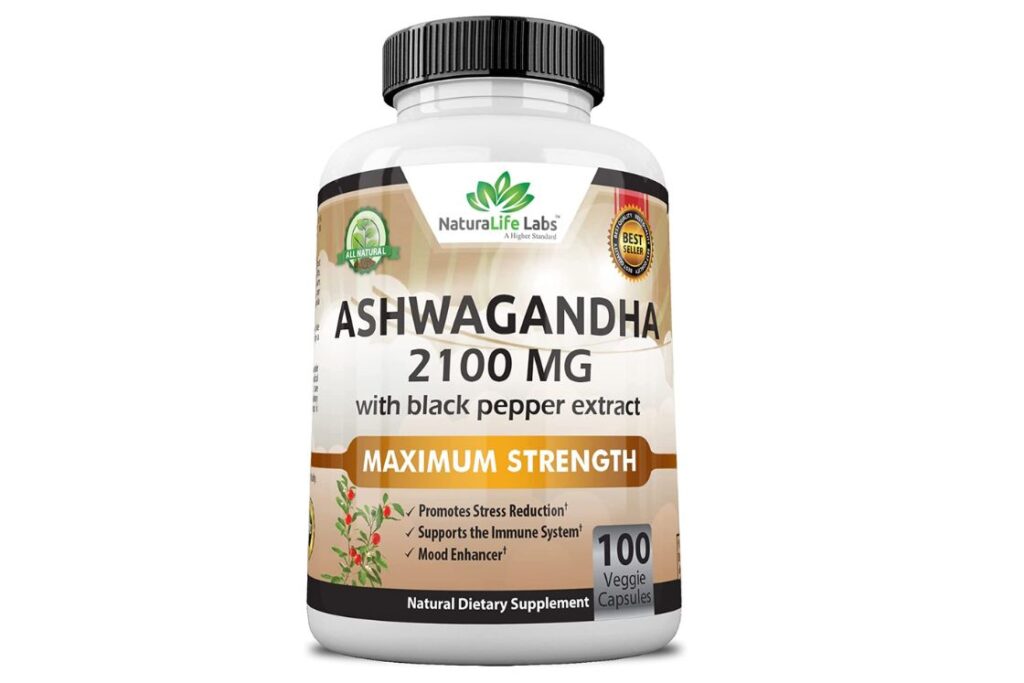
2. Ginger
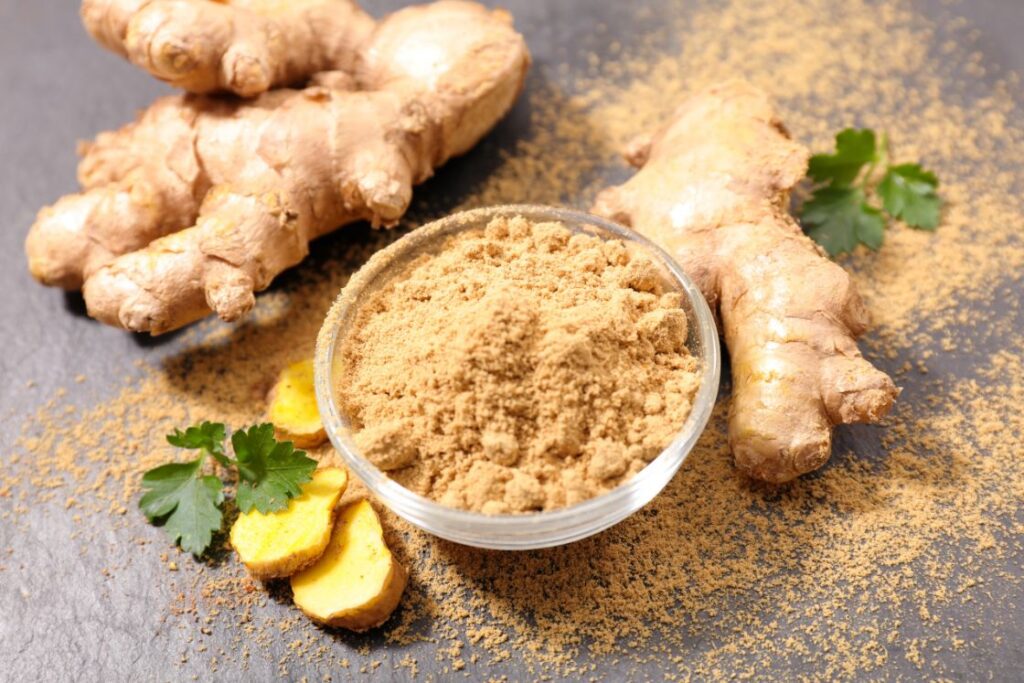
Ginger is amongst the most significant and popular plants according to Ayurveda, and it has been used for millennia to treat many ailments.
Ginger is one of the most common herbs found in Indian homes. Ginger has an inherent quality of being hot and pungent thus, it promoted digestive fire and helps prevent nausea, intestinal gas, and menstrual cramps.
Ginger considerably boosts the digestive fire (agni), which in turn enhances appetite, generally promotes the digestive and cleansing processes, and consequently lessens bloating.
Due to its positive effects on digestion, absorption, and elimination, ginger is also an effective treatment for typical Vata digestive problems.
It can also aid in removing too much Vata (in the form of air) from the lungs. It also aids healthy reflux and easy breathing.
It boosts the flow of nerve impulses, activates the neurological system, and alleviates pain.
The phytonutrients known as gingerols in ginger have potent anti-inflammatory, antibacterial, and antioxidant activities.
Fresh ginger has a stronger flavour and has higher quantities of gingerol and other anti-inflammatory components than dried ginger, thus it is preferable to consume fresh ginger as opposed to dry. In the event that you must utilize dried ginger powder, look for a non-irradiated, naturally cultivated source.
How to use Ginger
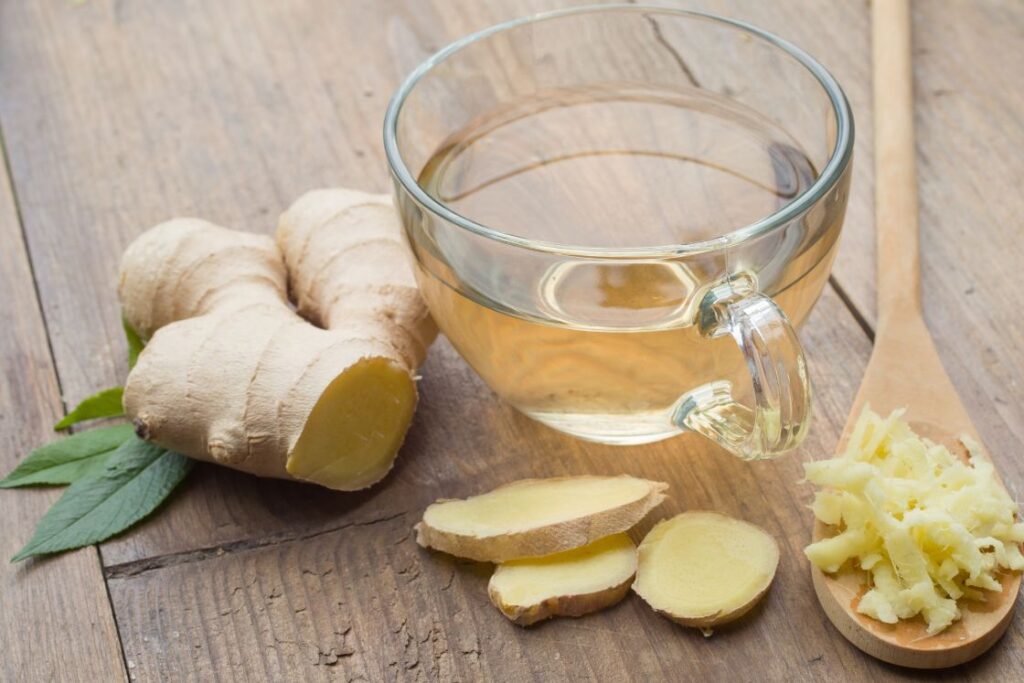
Not everyone likes the taste of raw ginger which is why you can use imbibe ginger, fresh or powdered while cooking food. Add a few juliennes of ginger with honey to your herbal tea to enhance the taste and its effect.
Drinking ginger tea or munching on fresh or candied ginger might warm the body and increase circulation in Vata people with cold hands and feet.
Taking ginger in the form of fresh juice is also a good way to make a tonic.
Mixing ginger juice, lemon juice, and honey can also help alleviate sleepiness, vomiting, nausea, headache, and indigestion.
Try out Ginger Juice by The Ginger People which doesn’t contain artificial ingredients or sugar. It is vegan and gluten-free.
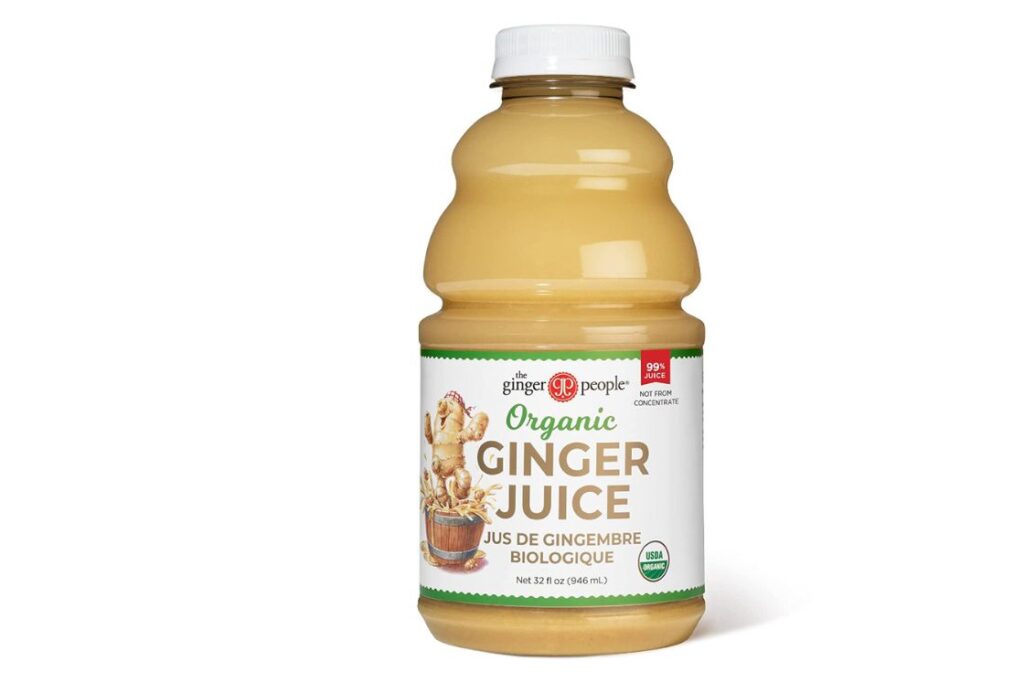
If you’re using a powder, use 1-2 gms at a time. For fresh juice, 5-10ml is considered sufficient to derive the benefits.
3. Triphala
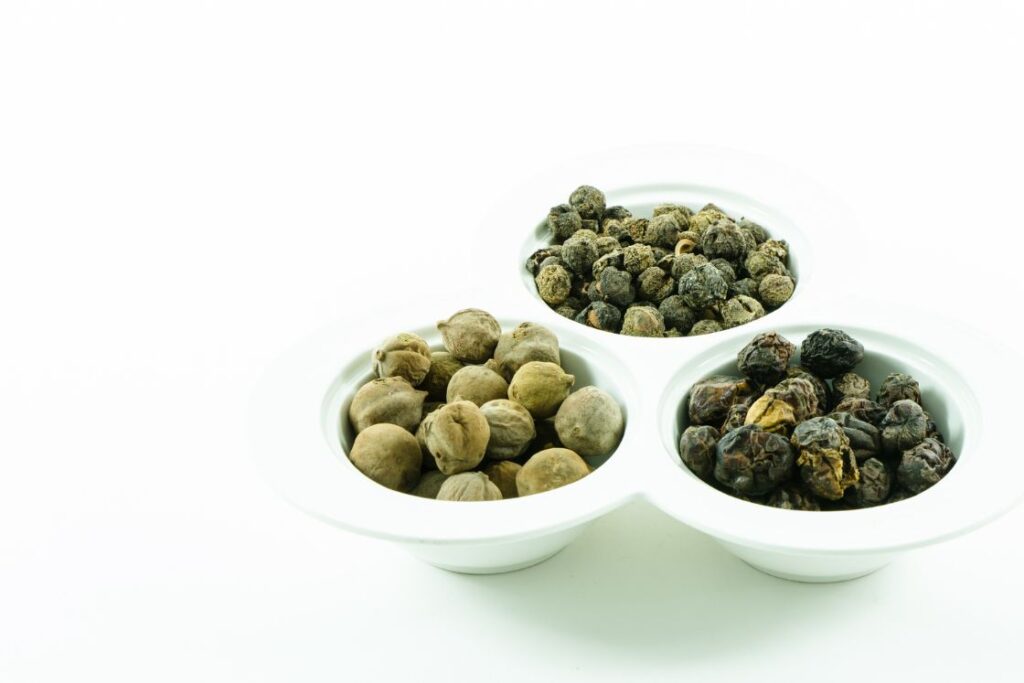
Translated as “three fruits”, this ayurvedic medicine is made up of Amalaki or Amla (Indian Gooseberry), Bibhitaki, and Haritaki and has historically been recommended as a moderate laxative and bowel tonic.
Each of these fruits has a unique function –
Amla has natural antioxidants and is a great source of Vitamin C. Haritaki is often used for its laxative propensity. Bibhitaki has both laxative and astringent characteristics.Interestingly, Triphala contains 5 tastes – sweet, sour, pungent, bitter, and astringent – and lacks the salty taste. It is said that whenever you take half a teaspoon of its powder with one teaspoon of ghee every night, the taste changes according to the missing taste in your body.
Since the colon is thought to be the location of Vata, using Triphala in the treatment of Vata’s digestive and elimination issues is ideal and advantageous. By removing harmful or stagnant toxins from the digestive tract and boosting the colon’s absorption capabilities, this combo promotes balanced, complete removal.
The use of Triphala is considered to have antibacterial properties, and it also improves intestinal barrier function and lowers inflammation.
Triphala is well known for having a high vitamin C concentration, making it a fantastic source of antioxidants that support the immune system, fight age, heal the liver, and prevent cancer. Triphala has the power to gradually detoxify the body without weakening it.
By producing energy and eliminating physical impurities, Triphala also helps the body battle lethargy and exhaustion.
Dermatological conditions such as skin inflammation, redness, acne, oxidative injury, dryness of skin, etc. can be treated and prevented with the aid of Triphala’s antioxidant and anti-inflammatory qualities. It results in healthy skin since it restores skin protein and holds onto moisture.
Triphala stimulates collagen production and lowers the danger of infection from harmful germs, which works brilliantly for healing wounds.
It can treat and stop premature graying of hair, lessen hair loss, minimize hair damage and dandruff, and clean hair follicles to give you soft and healthy hair.
It is claimed to be safe and is frequently advised to be taken consistently for the rest of one’s life because it does not induce dependence.
How to use Triphala
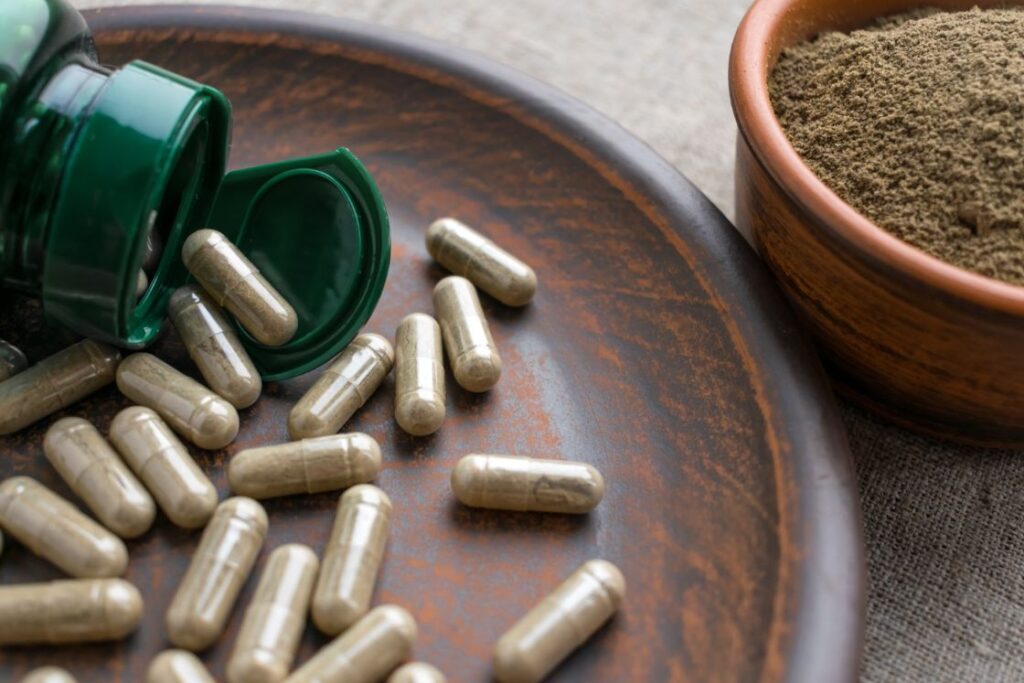
Triphala is widely accessible, particularly as a tea and powder.
Triphala can be taken in the morning on an empty stomach. It improves your body’s natural immune system, reduces vata imbalance, and detoxifies your body.
Make a paste of Triphala churna and warm coconut oil, then use it to gently cleanse your skin. If you have dry, uneven skin, this paste will be a boon for moisturizing and reviving it.
For vata imbalance, mix half a teaspoon of Triphala churna with 1 teaspoon of melted ghee. Before you go to sleep, take this mixture and follow it up with half a cup of warm water. Symptoms like gas, bloating, dryness, and constipation will be lessened by the ghee’s ability to moisten the GI tract.
In cases of underactive livers or other general liver diseases, a mixture of half a teaspoon of Triphala churna, two tablespoons of aloe vera juice, and one cup of warm water is helpful.
If you want to use Triphala for your hair, boil two pints of water and four tablespoons of Triphala churna for 10 minutes. Turn off the heat and allow it to cool. Pour gently over your hair and massage the concoction thoroughly. Leave it on for 30 minutes and then rinse.
Doing this once or twice a week can give you wonderful results.
Organic India makes Triphala Powder that is vegan, vegetarian, and Gluten Free and their formula are gentle.
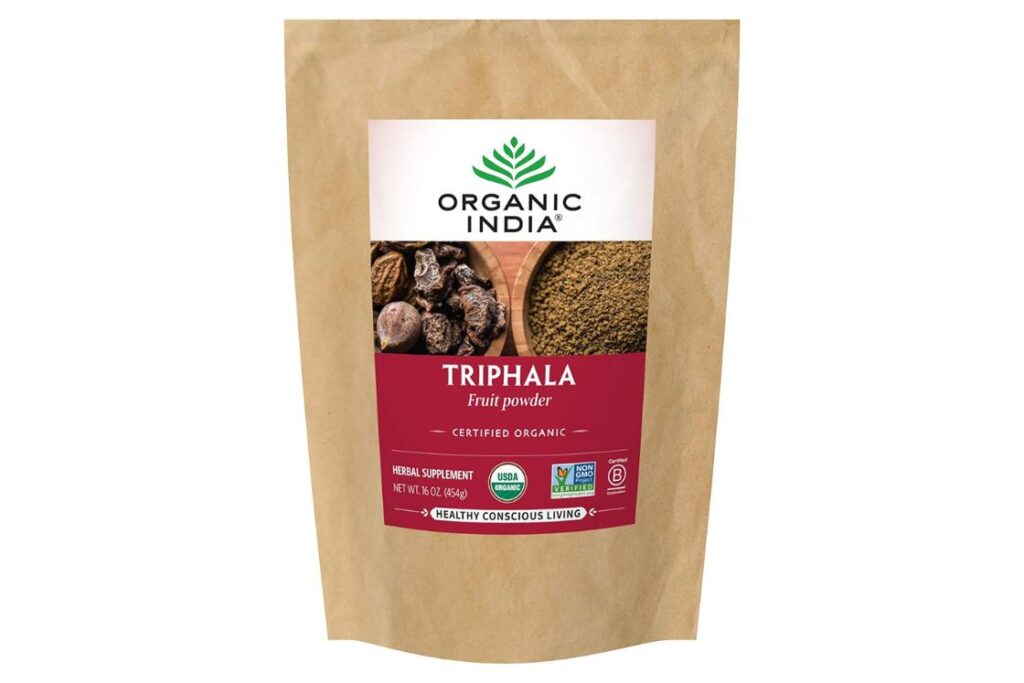
4. Gotu Kola/Brahmi
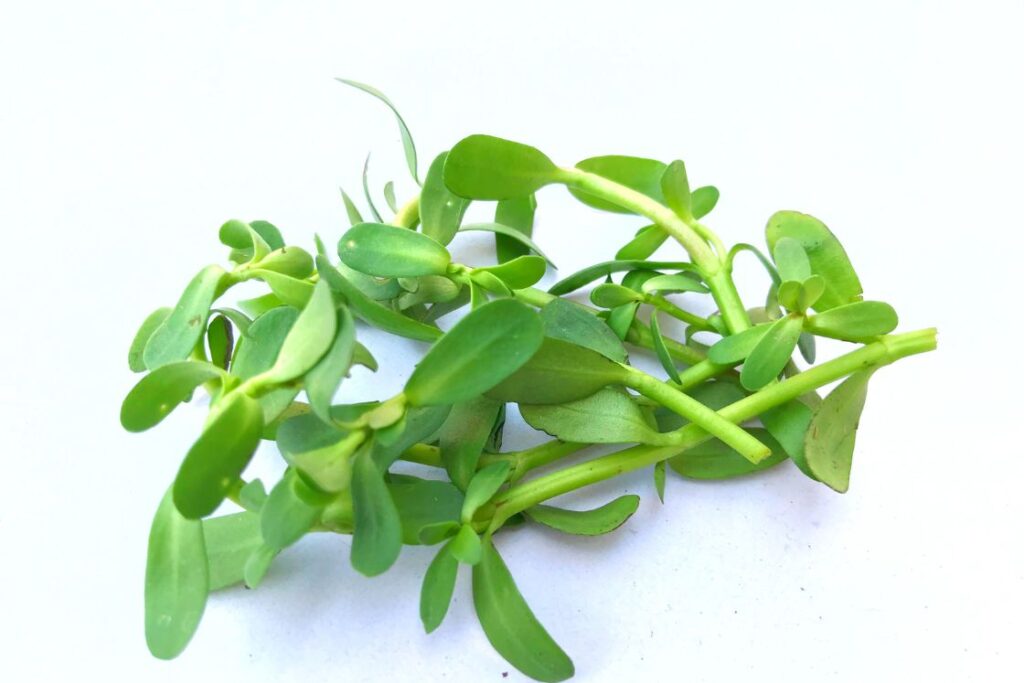
Gotu Kola, also known as Brahmi, is known as one of the best mental relaxants as it soothes the nervous system and enhances intellect. It is regarded as one of the most crucial herbs in Ayurveda and has been dubbed “the herb of enlightenment” and “the companion of the brain.”
Gotu kola normalizes bodily functions and aids in the body’s adjustment to stress. As a result, it benefits the neurological system by promoting restful sleep, and improving mood, memory, and mental clarity.
Gotu kola has a post-digestive impact and a bitter taste. As it works to subtly revive the digestive fire and enhance fundamental digestive health, gotu kola also promotes a good appetite.
It is also light, cool, and sweet. Its cooling and light quality make it ideal to treat a chaotic mind which arises due to stress, anxiety, over-exertion, and other mental vata imbalances.
The body is better able to flush out any toxin accumulation as a result of the lymphatic system’s mobility and its contribution to overall good circulation.
Being one of the best supplements for the brain, it is believed to improve cognition, memory, intellect, creativity, learning abilities, and executive functions.
Gotu Kola is thought to cleanse, soften, and protect the skin in addition to having a calming impact on the hair and scalp.
How to use Gotu Kola
The most effective method of consumption is thought to be fresh gotu kola juice. Additionally, salads taste fantastic when fresh gotu kola greens are added. You can use this herb as a chutney as well.
Powdered gotu kola, when consumed on its own with warm or room temperature water, can still be highly beneficial if fresh gotu kola is not accessible.
Use Just Jaivik 100% Organic Brahmi Powder if you cannot source fresh leaves.
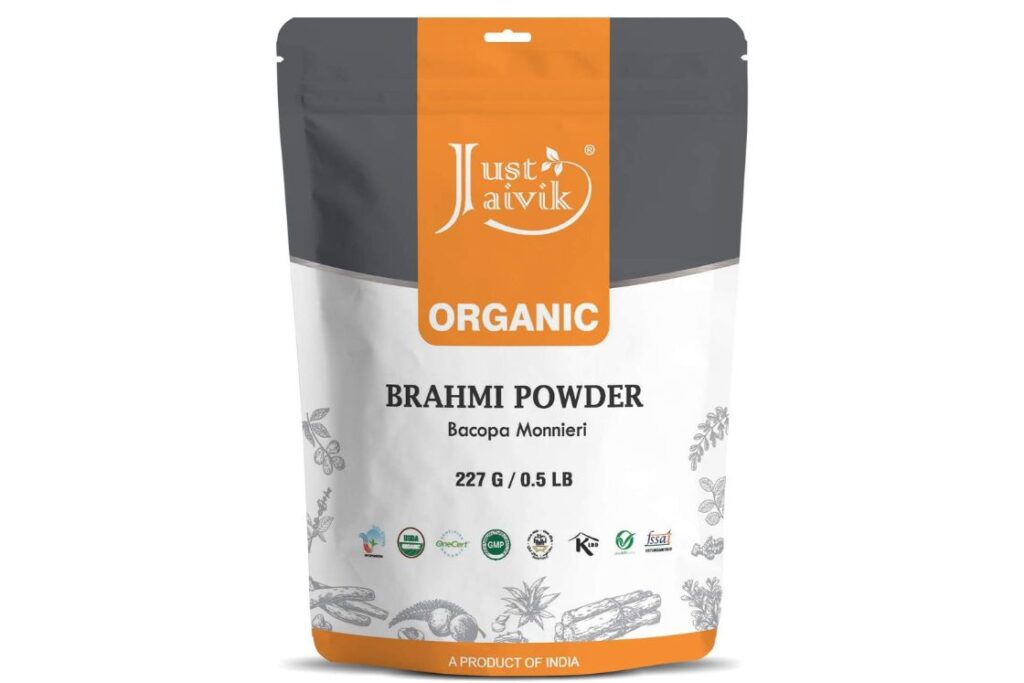
It is typically not advisable to use hot water with gotu kola because it can lose some of its benefits.
Another choice is to take Brahmi tablets or liquid extract.
Moreover, massaging your head with gotu kola/brahmi oil will be extremely useful to absorb its cooling attribute. You can also make a paste with powdered brahmi and water and apply it topically to encourage optimal joint movement and healthy skin.
5. Dashmul
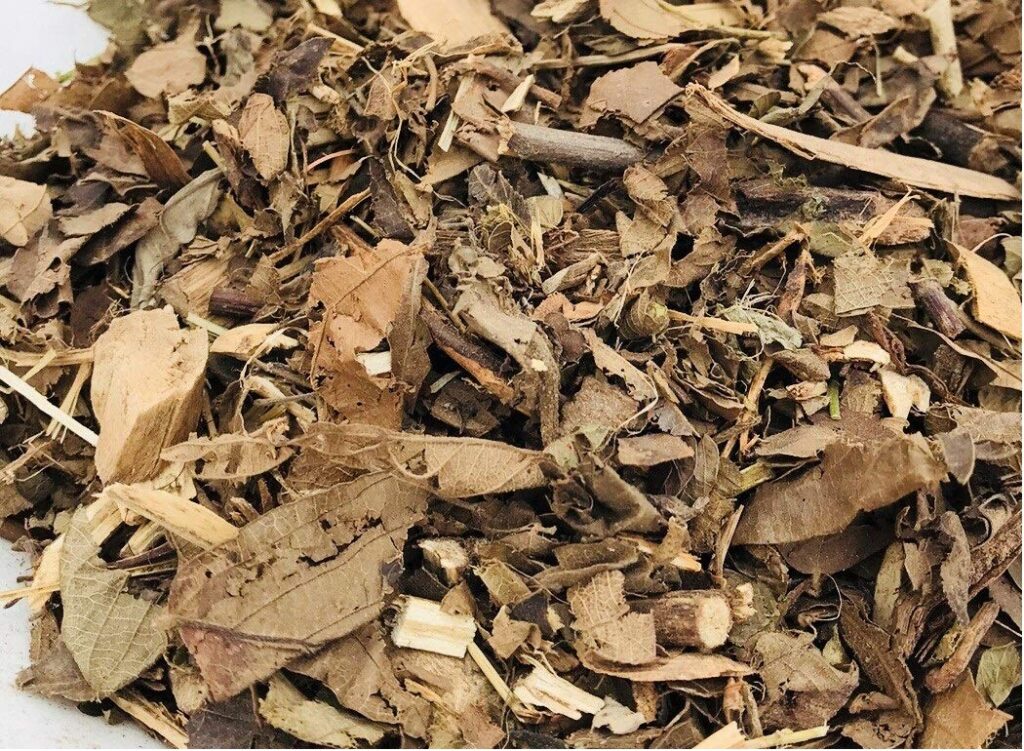
In Ayurveda, a compound of 10 roots known as dashmul is frequently used to treat a variety of ailments involving the nerves, muscles, bones, and joints.
It possesses mild analgesic, antioxidant, and powerful anti-inflammatory effects. It is a component of various ayurvedic medications and is also used on its own for musculoskeletal pain disorders and inflammatory conditions.
In addition to acting as an anti-inflammatory, analgesic, and anti-rheumatic agent, Dashmul’s contents soothe Vata disturbance. Furthermore, it strengthens the body and enhances the performance of organs with Vata sites. It calms nerves while toning muscles.
Dashmul facilitates digestion by bolstering the stomach’s inner lining.
It is beneficial to detoxify the body because it is known to remove toxins from the body.
Due to its sedative effects, it may help you fall asleep deeply and comfortably. However, it must be prescribed by a qualified Ayurvedic doctor.
It eases constipation, increases urine flow, fortifies bones, enhances hearing, and lessens pain in the lower limbs (thigh, legs, and feet).
Additionally, the Dashmul combination decreases the incidence of cough bouts and breathing problems, particularly those that happen at night.
How to use Dashamul
Dashmul is available in the form of a coarse powder. It can be used to make a decoction at home.
Take 1-2 spoons or 10-12 grams of coarse powder in one glass of water and boil it until it decreases to half a cup to form the decoction. Filter this, then have half a cup twice daily.
Mixing the dashmul decoction with a pinch of dry ginger powder can alleviate the symptoms of diarrhea.
You can mix half a teaspoon of dashmul powder in your herbal tea and drink the strained liquid when it is warm. You can ideally drink it twice a day before breakfast or dinner.
You can also purchase it in the form of a tonic which can be diluted in warm water.
The actual dosage requirements should only be consulted with an experienced ayurvedic practitioner.
Try out this dashmul powder from Banyan Botanicals which source its ingredients organically and are processed following the USDA’s National Organic Program (NOP).
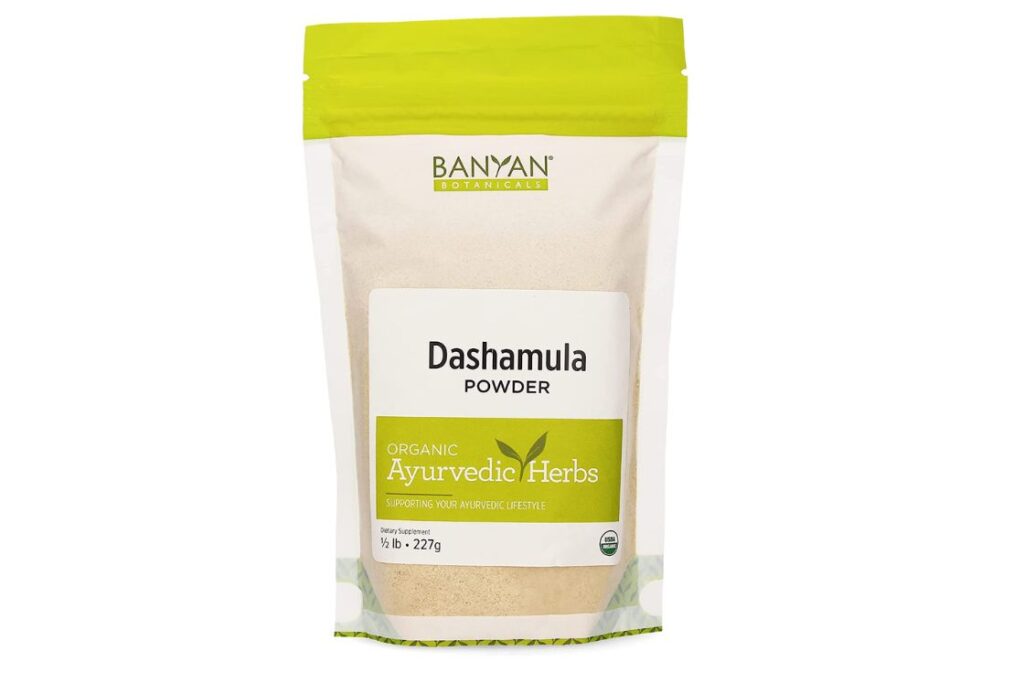
6. Tulsi/Holy Basil
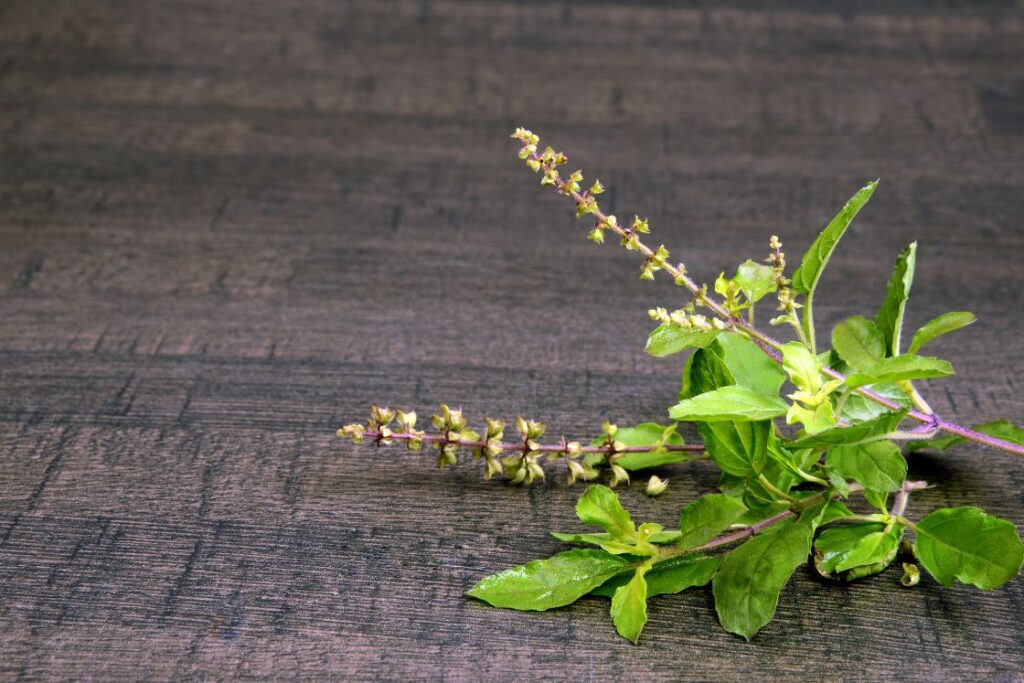
The medicinal powers of tulsi, often known as holy basil, can treat a variety of ailments because it is a strong and versatile herb.
With a delicious floral flavor, tulsi is a warming plant. It increases circulation and enables the mind to feel lighter while also clearing the lungs. The delicate floral scent is not overbearing and is calming and relaxing.
It serves as one of the most well-liked and popular lung elixirs in Ayurveda. It is the ideal herb for chaotic and difficult times since, as an adaptogen, it also assists the body to cope with stress.
Tulsi intensifies heat and directs it toward the head. People with a vata constitution, who are typically cool, will benefit from the increase in body temperature.
Your digestive heat is boosted, which improves digestion. Strong digestion promotes immunity and enhances nutrition absorption from the diet. Gas and bloating are reduced thanks to tulsi’s potent digestive-aid properties.
The heart may also be stimulated by the tulsi’s slight pungency. The enhanced circulation warms and feeds the blood altogether. This increase in blood flow and heat can invigorate a Vata person’s entire body because they tend to have weak blood circulation.
Tulsi gives the mind a peaceful yet alert feeling. It enhances creativity and concentration.
Additionally, tulsi aids in the release of emotional tension held in tense muscles. These tense parts of your body are typically brought to awareness by tulsi’s calming and blood flow-improving properties.
Tulsi’s effectiveness on the adipose tissue layer contributes to its ability to support optimal weight management.
To maintain a young appearance, Tulsi can be directly administered to the skin to help soothe and cleanse it.
How to use Tulsi
Tulsi performs admirably by itself because of its uplifted, sattvic energy and warming pungency. This herb works well in a variety of recipes since it blends seamlessly with other elements.
Sipping Tulsi tea is a simple and efficient approach to ingesting the herb. Mix tulsi powder and your favorite tea powder in a 1:10 ratio and use this mixture to make tulsi tea.
Ginger and Tulsi’s herbal tea supports the lungs and immune system while warming the body and reducing excess Vata.
Do not use tulsi with milk as the opposing qualities – warming tulsi and cooling milk – can lead to skin breakouts.
Supplements made from tulsi are also an easy way to gain all of the herb’s advantages.
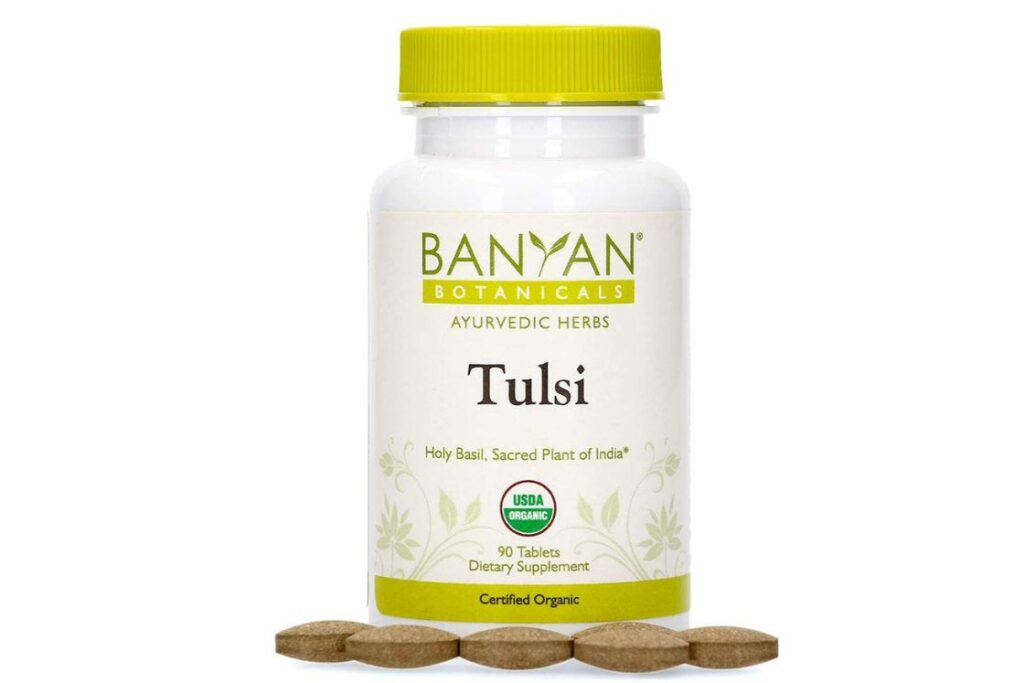
Conclusion
Herbal medicines can be particularly beneficial for Vatas in terms of enhancing elimination, sleep, and digestion. Additionally, they can stimulate detoxification and rejuvenation while restoring immunological function and calming an anxious mind.
Ashwagandha, Tulsi, Triphala, Ginger, Gotu Kola, Vidari, Bala, Yesthi Madhura, Dashamul, Shanka Pushpi, and Jatamansi are a few such herbs that can be used.
The best way to choose your dosage and time of use is always to consult a professional Ayurvedic doctor.
The body may need three to six weeks to adjust completely to a new herb or medication. When a formula produces the intended result, you can choose to gradually cease using it or keep utilizing it as a regular supplement.

 ShanonG
ShanonG 

































